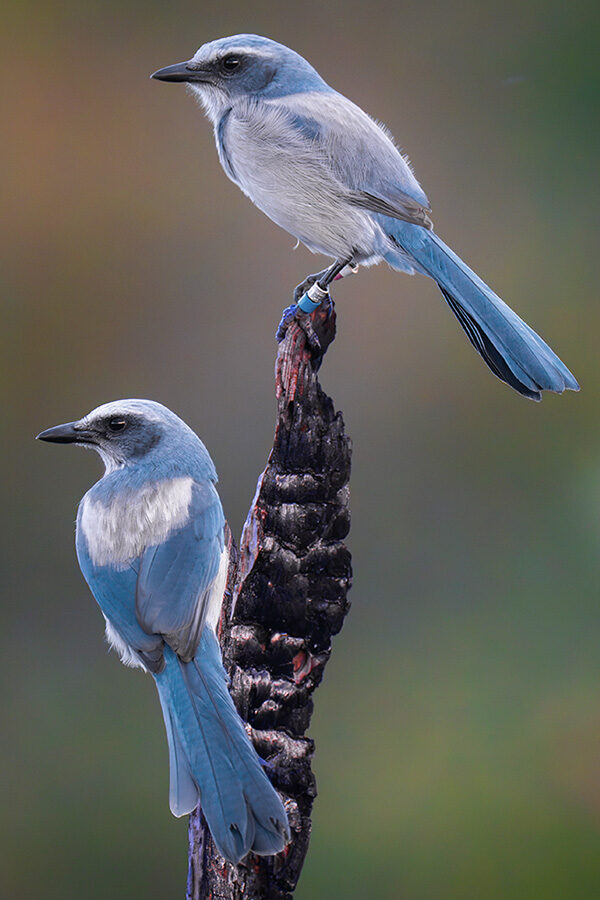- ORDER: Pelecaniformes
- FAMILY: Pelecanidae
Basic Description
One of the largest North American birds, the American White Pelican is majestic in the air. The birds soar with incredible steadiness on broad, white-and-black wings. Their large heads and huge, heavy bills give them a prehistoric look. On the water they dip their pouched bills to scoop up fish, or tip-up like an oversized dabbling duck. Sometimes, groups of pelicans work together to herd fish into the shallows for easy feeding. Look for them on inland lakes in summer and near coastlines in winter.
More ID InfoFind This Bird
Though American White Pelicans breed at fewer than 60 colonies in total, their large size and propensity to travel large distances, even when breeding, make finding them fairly straightforward. Finding them depends on where you are and what time of the year it is, so check a range map to find out whether you should be looking in inland sites in the north or coastal spots in the south of the continent. When you’re on the lookout for pelicans, don’t just look at the water surface; scan the skies and you may find large flocks of these immense birds soaring inconspicuously very high up. Though they are typically found along coasts in winter, you can also find large numbers in California’s Central Valley, the Salton Sea, and the Colorado River drainage of California and Arizona. Migrants are often noted in spring or fall passing various western hawkwatches, particularly the Smith Point and Hazel Bazemore hawkwatches in Texas.
Other Names
- Pelícano Norteamericano (Spanish)
- Pélican d'Amérique (French)
- Cool Facts
- In A Sand County Almanac, pioneering conservationist Aldo Leopold described a migrating group of American White Pelicans this way: “Let a squadron of southbound pelicans but feel a lift of prairie breeze… and they sense at once that here is a landing in the geological past, a refuge from that most relentless of aggressors, the future. With queer antediluvian grunts they set wing, descending in majestic spirals to the welcoming wastes of a bygone age.”
- American White Pelicans cooperate when feeding. Sometimes, large groups gather in wetlands. They coordinate their swimming to drive schooling fish toward the shallows. The pelicans can then easily scoop up these corralled fish from the water.
- American White Pelicans must provide roughly 150 pounds of food to nourish a chick from its birth to the time it's ready to forage on its own.
- Contrary to cartoon portrayals and common misconceptions, pelicans never carry food in their bill pouches. They use them to scoop up food but swallow their catch before flying off.
- Pelicans are skillful food thieves. They steal from other pelicans trying to swallow large fish and are successful about one-third of the time. They also try to steal prey from Double-crested Cormorants that are bringing fish to the surface. In their dense nesting colonies, some birds even steal the food that a parent on an adjacent nest has disgorged for its young.
- Pelican chicks can crawl by 1 to 2 weeks of age. By 3 weeks they can walk with their body off the ground and can swim as soon as they can get to water. Older chicks move up to running, then running with flapping their wings, and by the age of 9 to 10 weeks, they can fly.
- They forage almost exclusively by day on their wintering grounds, but during breeding season, they commonly forage at night. Even though it’s hard to see, nighttime foraging tends to result in larger fish being caught than during the daytime.
- American White Pelicans and Double-crested Cormorants are often found together. They sometimes forage together (though they mainly hunt different fish and at different depths). Cormorants even nest individually or in groups within pelican colonies.
- Pelicans are big birds that can overheat when they’re out in the hot sun. They shed heat by facing away from the sun and fluttering their bill pouches—which contain many blood vessels to let body heat escape. Incubating parents may also stretch their wings wide to aid cooling.
- American White Pelican embryos squawk before hatching to express discomfort if conditions get too hot or cold.
- The oldest known American White Pelican at least 23 years, 6 months old and was banded in North Dakota in 1983.


